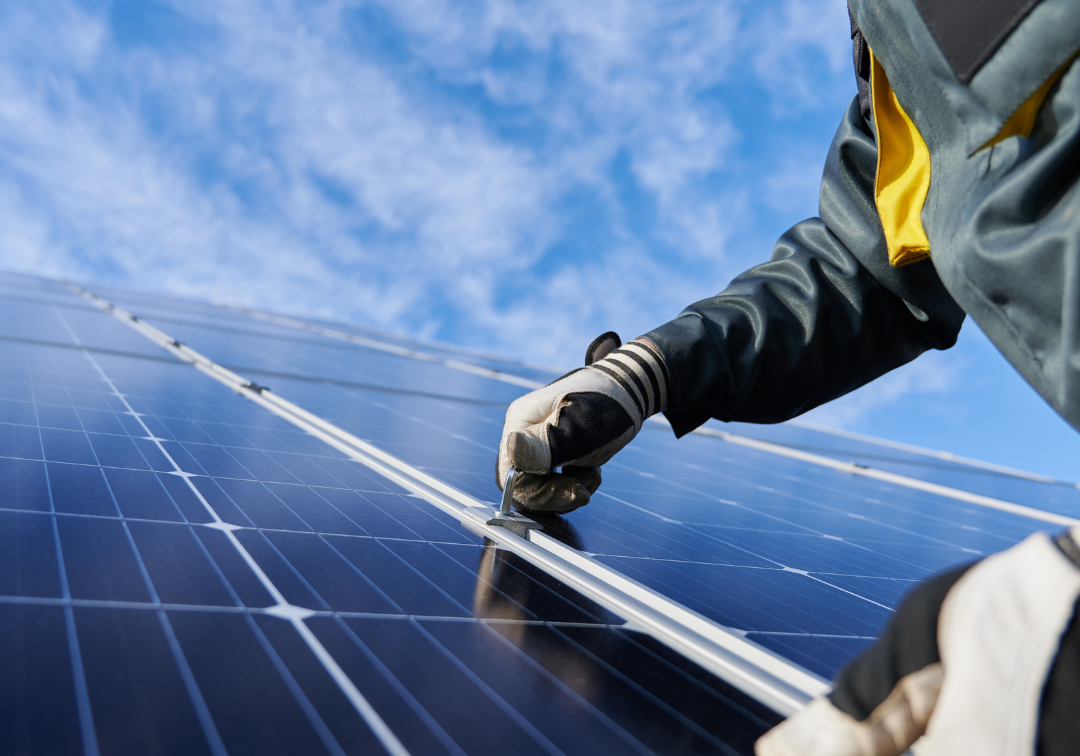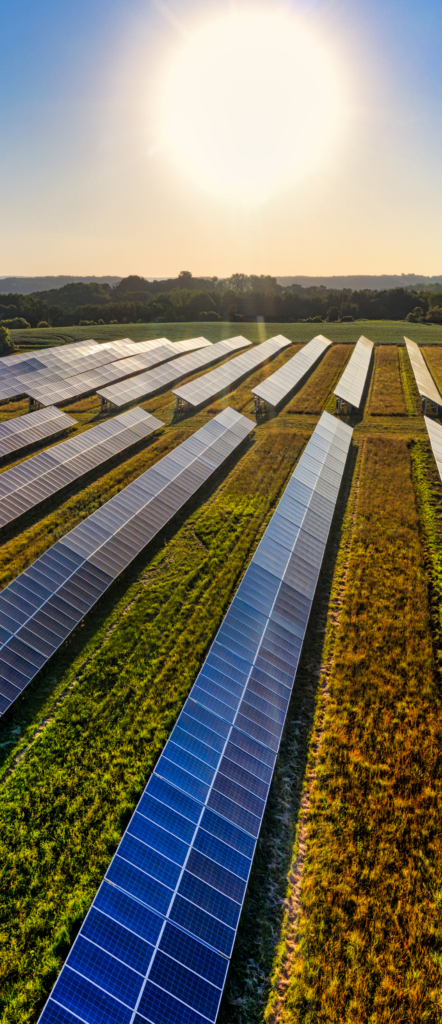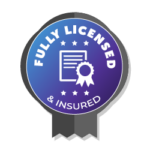Leasing Solar Panels

What About Leasing Solar Panels
How Solar Panel Leasing Works
Solar panel leasing is an arrangement where a homeowner or business owner can install solar panels on their property without the high upfront costs typically associated with purchasing the system. With a lease, the homeowner essentially rents the solar equipment from a solar company for a set period, often 20 to 25 years.
- Ownership: The solar company retains ownership of the panels, while the homeowner benefits from the energy generated by them.
- Monthly Payments: In return for the solar energy, the homeowner makes monthly lease payments to the solar company.
- No Upfront Costs: One of the main advantages is that homeowners do not have to pay for the installation or equipment upfront.
At the end of the lease period, the homeowner typically has options such as renewing the lease, purchasing the system at a reduced price, or having the panels removed.
 Pros and Cons of Leasing Solar Panels
Pros and Cons of Leasing Solar Panels
Pros:
- No Upfront Cost: The most significant benefit of solar leasing is that it eliminates the large upfront cost of purchasing solar panels. This makes solar power accessible to homeowners who may not have the cash to pay for a system outright.
- Low Maintenance: With leasing, the solar company typically covers the maintenance, repairs, and monitoring of the system, meaning homeowners don’t have to worry about additional costs.
- Predictable Monthly Payments: Homeowners make fixed monthly payments, which makes budgeting easier.
- Possible Tax Incentives: Although you don’t own the system, some regions allow you to claim tax incentives on your lease payments, depending on local laws.
Cons:
- No Ownership: Since you don’t own the system, you don’t get to keep any of the long-term savings. At the end of the lease, the equipment belongs to the leasing company unless you decide to purchase it.
- Increased Monthly Payments: Monthly lease payments can be expensive, and in some cases, higher than your average utility bill, depending on the terms of the lease.
- Limited Flexibility: Solar leases are long-term contracts (often 20-25 years). If you decide to move or sell your home, you may need to transfer the lease to the new owner, which could complicate the sale process.
- No Increase in Property Value: Because you don’t own the system, you may not see an increase in your home’s property value, which is a benefit many homeowners get when they buy solar panels.
What Are Power Purchase Agreements (PPAs)?
A Power Purchase Agreement (PPA) is another financing option for solar energy installation, similar to leasing, but with a key difference. Under a PPA, the homeowner agrees to purchase the power generated by the solar panels from the solar company at a fixed rate per kilowatt-hour (kWh), usually at a lower price than the utility’s current rates.
How PPAs Work:
- The solar company installs and maintains the solar system at no upfront cost to the homeowner.
- The homeowner pays for the electricity generated by the solar panels rather than paying a flat monthly fee for the panels themselves.
- The rate for electricity is typically lower than the utility’s electricity rate, providing savings from day one.
- The contract length is typically around 20-25 years.
Pros and Cons of Power Purchase Agreements
Pros:
- No Upfront Costs: Like leasing, PPAs don’t require any upfront payment for the solar system. You only pay for the electricity you use.
- Savings on Electricity: PPAs often provide immediate savings by offering lower electricity rates compared to your utility company.
- System Maintenance Included: The solar company usually handles all system maintenance and monitoring, so you don’t need to worry about repairs or upkeep.
- Flexibility in Payments: Because you're purchasing the power produced, monthly payments are tied to the actual amount of energy used, making it easier to manage.
- Long-Term Energy Savings: In many cases, PPAs offer more flexibility for homeowners and businesses to save on their electric bills.
Cons:
- No Ownership: Similar to solar leasing, you don’t own the solar panels, meaning you don’t get the long-term savings benefits of owning the system, and you don’t receive tax incentives.
- Rates Can Increase: Some PPAs have annual rate escalators, meaning that the rate you pay for solar power may increase each year, potentially eroding the savings over time.
- Contract Length: PPAs typically last 20-25 years. If you decide to move, you may have to transfer the contract to the new homeowner, or it could make selling your home more difficult.
- Limited Property Value Increase: Since the solar system is owned by the solar company, the system doesn’t add value to your property as an owned solar system might.
Both solar panel leasing and PPAs are viable options for homeowners who want to take advantage of solar energy without the high upfront costs of purchasing a solar system. Each option comes with its own set of advantages and challenges, so it’s important to consider the long-term impact on your finances, property, and energy savings before making a decision. If you're looking for lower monthly energy costs without having to maintain the system yourself, either leasing or a PPA might be a good choice.
How Does A Solar Panel Lease Work?
A solar panel lease is a straightforward and hands-off way for homeowners to install solar panels without paying upfront costs. In this agreement, you essentially rent the solar system from a solar provider, who handles the installation, maintenance, and sometimes repairs. Here's how it typically works:
- Lease Agreement: You sign a contract with a solar company that installs and maintains the solar system on your property. Often, the upfront cost is $0.
- Monthly Payments: After installation, you make fixed monthly payments to lease the system. These payments are typically about the same as your prior electricity bill.
- Rate Increase: Over time, your lease payments might increase slightly, often capped at around 3% annually. This is typically done to account for inflation and increasing energy costs, but it allows you to save money compared to rising utility rates.
- Maintenance: The solar company typically handles installation and maintenance of the solar system. This might include warranties, insurance, and any necessary repairs, though in some cases, you may be responsible for replacement costs of faulty equipment.
Solar Leasing Contracts
When entering a solar panel lease agreement, there are some specific terms you should be aware of:
- Down Payment: Most solar leases have $0 down, but always confirm if there are any upfront payments required.
- First Monthly Payment: Your first payment is usually due after installation, but some companies offer an option to prepay for some electricity to lower the monthly payments.
- Rate Increase Cap: Look for a rate increase cap in the lease agreement. Typically, this cap ensures your monthly payments won’t rise by more than a set percentage (usually 1%-5%) each year.
- Lease Term: Solar leases typically last 20-30 years, the general lifespan of solar panels.
- End of Lease: At the end of the lease term, options may include renewing the lease, upgrading to a new system, or removing the solar system.
- Can I Buy the Panels?: Unlike some other agreements, leasing doesn’t allow for purchasing the system at the end of the lease term. If you wish to buy the panels eventually, a Power Purchase Agreement (PPA) might be more appropriate.
- If You Move: If you decide to move, you have options. You may be able to transfer the lease to the new homeowner, move the system to your new house (though there are often fees involved), or pay to have the system removed.
Pros and Cons of Leasing Solar Panels
Advantages:
- No Upfront Cost: The most significant benefit is that you don’t need to pay for the system upfront. Instead, you make monthly payments that are often similar to your prior utility bill.
- Low or No Maintenance Costs: You don’t need to worry about maintaining or repairing the system. The solar company usually handles this, saving you time and money.
- Additional Utility Savings: Solar leasing might provide other benefits, such as helping to power your heating system, pool, or water heater with solar energy.
- Customizable Installation: You can often have a say in the type of panels or mounting style installed on your roof.
Disadvantages:
- No Ownership: You don’t own the system, meaning you don’t gain any ownership benefits, such as eligibility for tax credits or rebates, or adding the system’s value to your home’s sale price.
- No Net Metering: Typically, you won’t be able to sell excess energy back to the utility company through solar net metering, which is a key advantage of owning a system.
- Limited to Lease Terms: You’re locked into a long-term contract (20-30 years) without the option to buy. If you plan to eventually purchase the system, you might want to explore a PPA instead.
Additional Considerations:
- Availability: Make sure solar leases are available in your area, as they may not be offered in all states, particularly those with less solar exposure.
- Solar Sun Number Score: It’s worth checking your Solar Sun Number before deciding to lease, as it provides insight into your home’s solar potential based on your location and roof conditions.
In conclusion, solar panel leasing can be an excellent option if you’re looking to enjoy the benefits of solar power without upfront costs. However, you should carefully review the lease terms, consider the long-term implications, and determine if this option fits your financial and homeownership goals.
How Does a Power Purchase Agreement (PPA) Work?
A Power Purchase Agreement (PPA) is another way to finance your solar system, offering an alternative to a solar panel lease. With a PPA, instead of purchasing the solar panels, you purchase the electricity generated by the system. You pay for the electricity at a reduced rate, which is typically lower than the electricity rates charged by your utility provider. Here's how it works:
- Payment per kWh: With a PPA, your payments are based on the amount of electricity the solar system generates, measured in kilowatt-hours (kWh). This is different from a solar lease, where you pay a fixed monthly amount.
- Fixed Rate: The electricity price you pay can follow one of two models:
- Fixed Escalator Plan: Your electricity prices will rise at a predetermined rate (typically 2%-5% per year). This increase is usually lower than the price hikes your utility company would impose.
- Fixed Price Plan: The rate you pay for electricity remains the same throughout the term of the agreement, offering predictable costs even if utility prices increase.
- Upfront Costs & Maintenance: Like a lease, the solar company installs and maintains the solar system. They cover most, or all, of the upfront costs and assume the risks related to the system's performance. This allows you to benefit from solar power without worrying about installation, maintenance, or repair.
- Option to Buy the System: Unlike a traditional solar lease, with a PPA, you have the option to purchase the solar system from the developer at a predetermined price during or at the end of the agreement. This makes a PPA more attractive if you might want to own the system later.
- States Where Available: Keep in mind that only about half of U.S. states allow PPAs. Therefore, before you sign a PPA, make sure your state permits this kind of agreement.
Key Benefits of a PPA:
- Lower Energy Rates: You typically pay lower electricity rates than those charged by your utility company, making it a cost-effective option.
- No Upfront Costs: As with solar leasing, you won’t have to pay anything upfront for installation or maintenance.
- Option to Purchase the System: You have the flexibility to purchase the solar system at a later date, allowing you to own the system after a set period.
Potential Drawbacks:
- Complicated: PPAs can be more complicated than leases, requiring careful consideration of terms.
- Availability: Not all states offer PPAs, so check if your location is eligible before pursuing this option.
- Long-term Commitment: PPAs typically last 20-25 years, making it a long-term commitment, even though the cost savings can be significant.
In conclusion, a PPA is a solid choice if you want solar energy at a reduced price but don’t want to own the system right away. It offers flexibility, with the ability to buy the system later, and can lead to significant savings over time. Be sure to read the terms carefully and confirm that a PPA is available in your area before proceeding.
Contract Terms to Consider with a PPA
When entering into a Power Purchase Agreement (PPA), here are the key terms to carefully review:
- Energy Cost:
The cost of the energy you purchase will typically be at a fixed, predictable, low rate. The rate is usually capped at a 2%-5% annual increase, which is often lower than typical utility price hikes. This allows for easy budgeting and significant savings over time. - Lease Term:
PPAs generally last between 10 to 25 years. During this period, the solar developer will be responsible for the operation and maintenance of the system. You will not have to worry about repairs or system upkeep. - Option to Buy:
Many PPAs offer the ability to purchase the solar system at certain points within the agreement—for example, at 5 years or at the end of the lease. If you choose to buy, you may become eligible for additional rebates and tax incentives for owning the system outright. Owning the system could lead to even greater savings over time.
Summary: Solar Leasing vs. PPA
Solar Lease vs. PPA:
- Solar Lease: In a lease, you pay a fixed monthly fee for the use of the solar panels, regardless of how much energy is produced.
- Power Purchase Agreement (PPA): In a PPA, you pay a fixed rate based on the kWh of energy generated by the solar panels, offering more flexibility if your energy needs vary.
Both options are forms of third-party ownership, which have become increasingly popular. In fact, about 60% of U.S. homeowners with solar have chosen one of these options.
Benefits of Solar Leasing & PPAs:
- No Upfront Costs: Both options allow you to go solar without paying anything upfront. This can make solar energy accessible to homeowners who might not have the funds to purchase a system outright.
- Fixed Monthly Payments: Your monthly payment for energy (in the case of PPAs) or for leasing the system (in leases) is often comparable to what you were already paying to your utility company for electricity. This means you can start saving right away.
- Low Maintenance & Hassle-Free: With either option, the solar provider handles installation, maintenance, monitoring, and repairs, so you don’t have to worry about the technical aspects.
Key Takeaways:
- PPAs offer flexibility, with an option to buy the system later, and can provide long-term savings as utility rates rise.
- Both leases and PPAs allow you to access solar energy with little to no money down and typically result in a reduced electricity bill.
- As with any contract, be sure to carefully review the terms, especially around rate increases, the lease term, and the purchase options at the end of the agreement.



